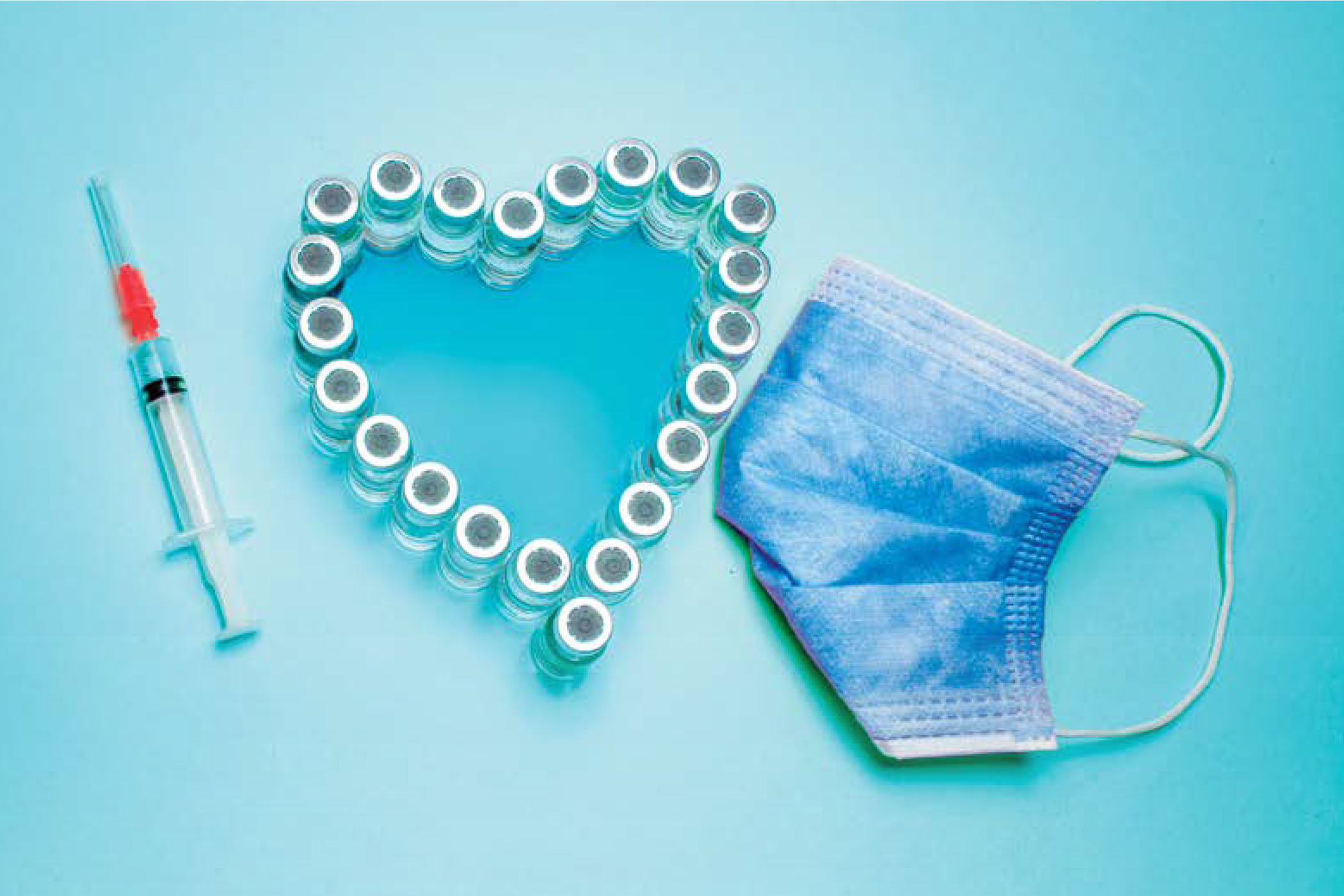
Issue 43 / August 2022
COVID-19 Special
International Study: Myopericarditis Risk after Covid-19 Vaccination is Low

As of March 2022, more than 10 billion doses of COVID-19 vaccines have been administered globally. While most side-effects of the vaccine are mild and self-limiting, myopericarditis or inflammation of the heart is increasingly being reported after COVID-19 vaccination.
new study published in The Lancet Respiratory Medicine1, found that the overall risk of myopericarditis following COVID-19 vaccination is very low, affecting 18 people per million vaccine doses. This confirms that the risk is comparable to or lower following COVID-19 vaccination than some of the other non-COVID-19 vaccines.
A team of researchers from the National University Heart Centre, Singapore (NUHCS), the National University Hospital (NUH) and the Yong Loo Lin School of Medicine, National University of Singapore (NUS Medicine), examined international databases, looking at more than 400 million vaccination doses, to compare the risk of myopericarditis following vaccination against COVID-19 and other diseases such as influenza and smallpox. They found no statistically significant difference between the incidence of myopericarditis following COVID-19 vaccination (18 cases per million doses) and other vaccinations (56 cases per million doses).
“Our research suggests that the overall risk of myopericarditis appears to be no different for this newly approved group of vaccines against COVID-19, compared to vaccines against other diseases. The risk of such rare events should be balanced against the risk of myopericarditis from infection and these findings should bolster public confidence in the safety of COVID-19 vaccinations,” said Dr Kollengode Ramanathan, Senior Consultant in the Department of Cardiac, Thoracic & Vascular Surgery at NUHCS and the corresponding author of the study.
Myopericarditis is a condition that causes inflammation of the heart muscle and, in some cases, severe permanent heart damage. It is most often caused by viruses but can also occur after vaccination in rare instances. There have been reports of myopericarditis following mRNA-based COVID-19 vaccination, especially in adolescents and young adults. This study aimed to determine whether this increase in reporting was due to a true increase in incidence or a result of improved reporting systems and recall bias.
Risk of
myopericarditis is
18
people per
million
of COVID-19
vaccine doses
The incidence of
myopericarditis
is significantly
higher in people
younger than
30
years
and after a
2nd
dose of vaccine
Researchers analysed more than 20 studies from international databases with reported incidences of myopericarditis following any type of vaccination between January 1947 and December 2021. Of these, 11 studies looked specifically at COVID-19 vaccinations, covering over 395 million COVID-19 vaccine doses—nearly 300 million of which were mRNA vaccines. The rest of the studies covered other vaccinations such as smallpox (2.9 million doses), influenza (1.5 million doses), and others2 (5.5 million doses).
Among people who received COVID-19 vaccines, the incidence of myopericarditis was significantly higher in males (vs females), in people younger than 30 years (vs 30 years or older), after receiving an mRNA vaccine (vs non-mRNA vaccine), and after a second dose of vaccine (vs a first or third dose).
To put the findings into context with the risk of myopericarditis following COVID-19 infection, the authors conducted a post-study analysis. Among 2.5 million patients who were hospitalised with COVID-19, many of whom had clinical or radiological suspicion for myopericarditis, 1.1% had myopericarditis. However, while these figures provide a frame of reference, the authors note that the results are not directly comparable with the number of cases of myopericarditis following COVID-19 vaccination due to different units of measurement.
“The occurrence of myopericarditis following non-COVID-19 vaccination could suggest that myopericarditis is a side effect of the inflammatory processes induced by any vaccination and is not unique to the SARS-CoV-2 spike proteins in COVID-19 vaccines or infection,” said Dr Jyoti Somani, an infectious diseases specialist at NUH, and a co-author of the study. “This also highlights that the risks of such infrequent adverse events should be offset by the benefits of vaccination, which include a lower risk of infection, hospitalisation, severe disease, and death from COVID-19.”
Mr Ryan Ruiyang Ling, co-author and a medical student at NUS Medicine, added, “The scale of mass global vaccination and enhanced surveillance might account for the increased reporting of this adverse event in the context of COVID-19 vaccination. Nonetheless, certain subpopulations—those of male sex or younger age and those receiving an mRNA vaccine, particularly the second dose—appear to be at increased risk of myopericarditis following COVID-19 vaccination. These findings are important additions to the conversation when weighing the risks and benefits of COVID-19 vaccination during this pandemic.”
The authors acknowledge some limitations with this study, particularly noting that the findings include only a small proportion of children under the age of 12 who have only recently been eligible for vaccination, and that results of this study cannot be generalised to this age group. In addition, comparisons have been made across different time periods for different vaccines. Diagnostic tools might have differed or not been available leading to lower reporting of cases in earlier studies.
Dr Ramanathan said, “There are several areas to which future research can build on our current study. Firstly, most of the studies included in our review did not report on outcomes of patients younger than 12 years receiving vaccination against COVID-19, as vaccination of this younger age group is relatively recent. Future research investigating the incidence of myopericarditis in this age group would inform clinical decision making for vaccinating children against COVID-19. More research also needs to be conducted to better understand the risk- benefit profile of COVID-19 vaccines in the context of protection against infection, hospitalisation and severe disease, and its potential adverse effects. The impact of booster vaccines will require further research as well.”
-
https://www.thelancet.com/journals/lanres/article/PIIS2213-2600(22)00059-5/fulltext.
-
Other viral vaccines in this study included: varicella, yellow fever, oral polio vaccine, measles, mumps and rubella, meningococcal, diphtheria, pertussis and tetanus, Bacillus Calmette-Guerin, hepatitis, and typhoid.




